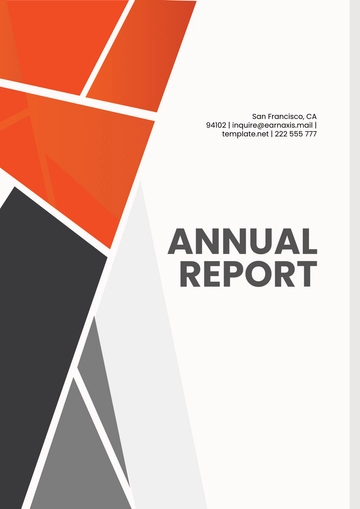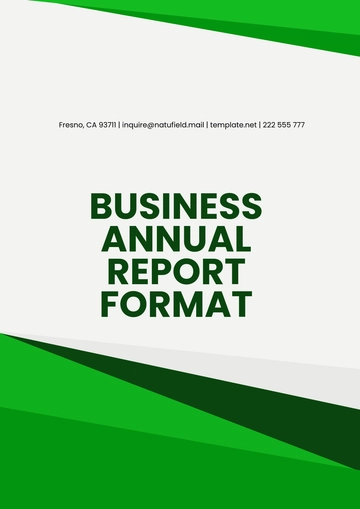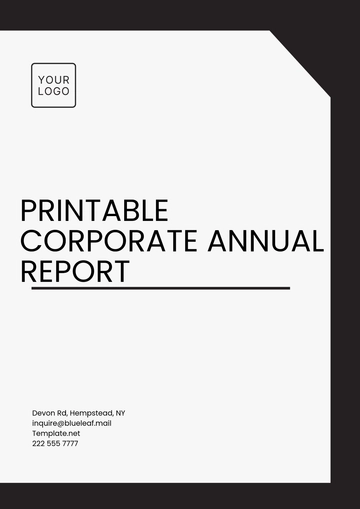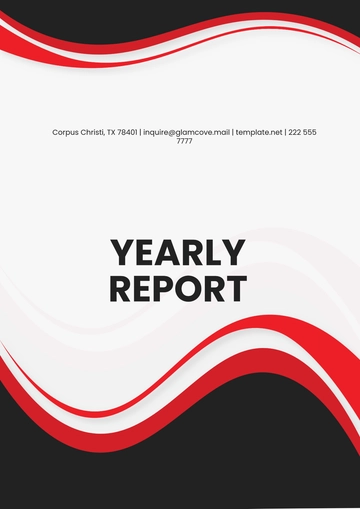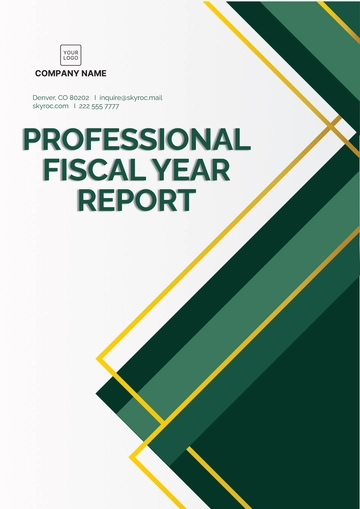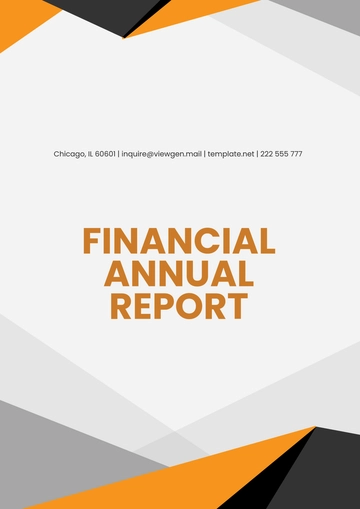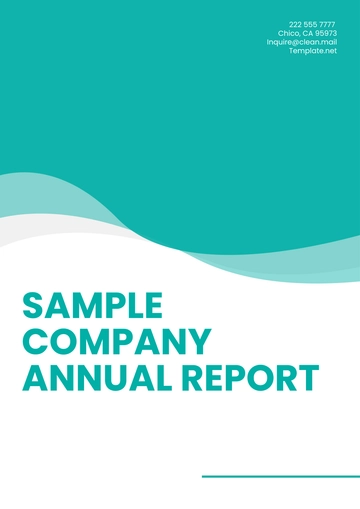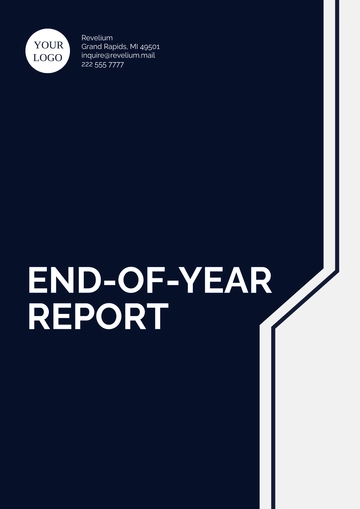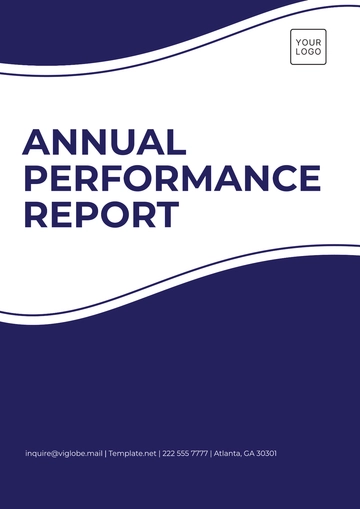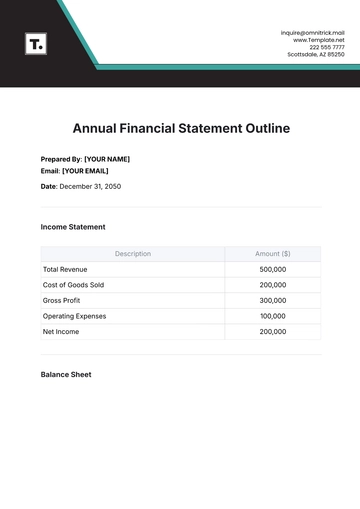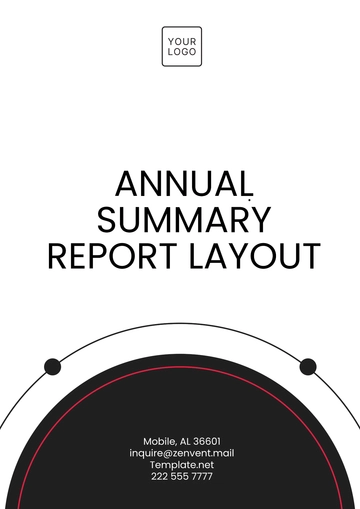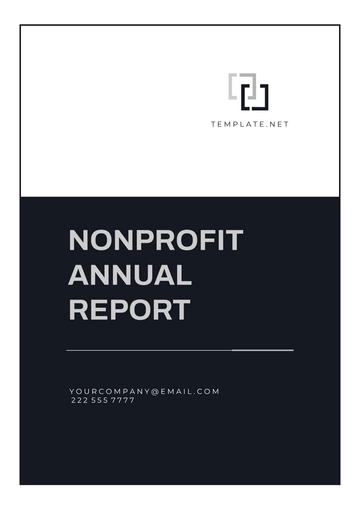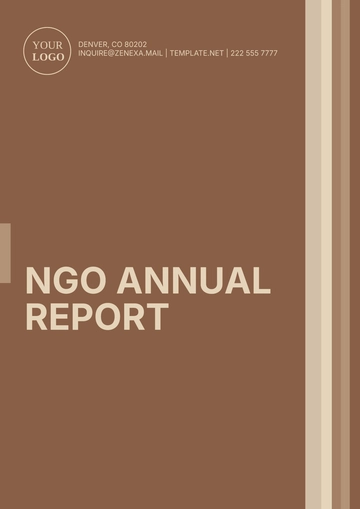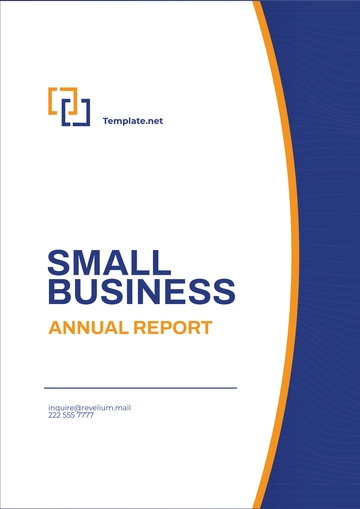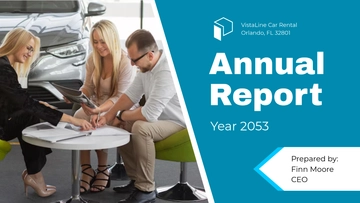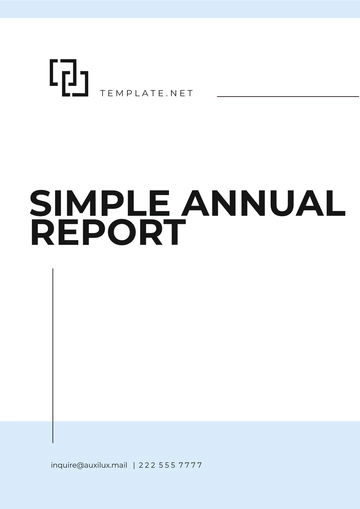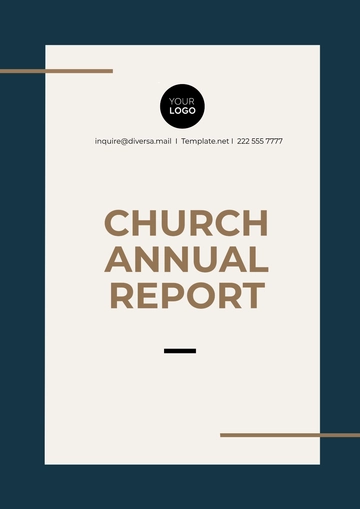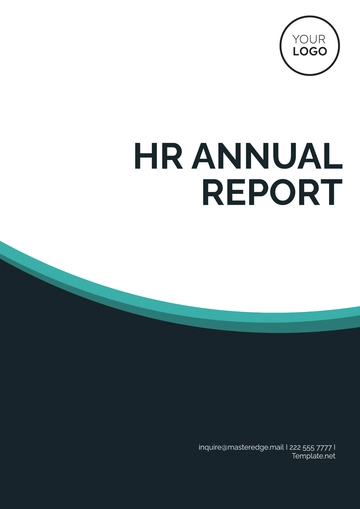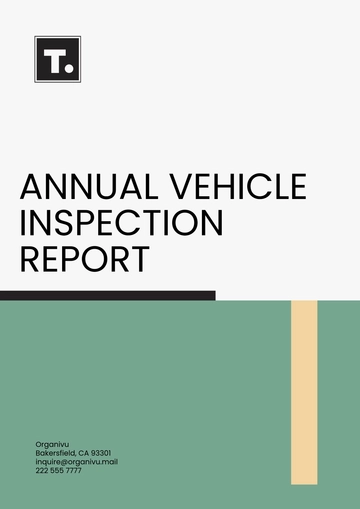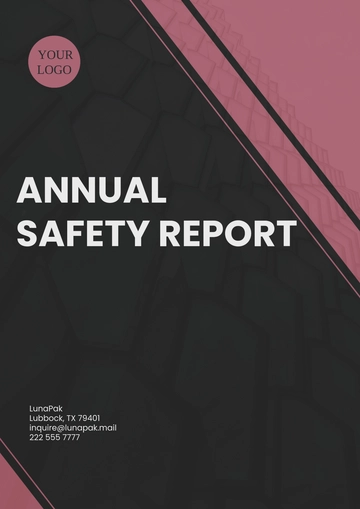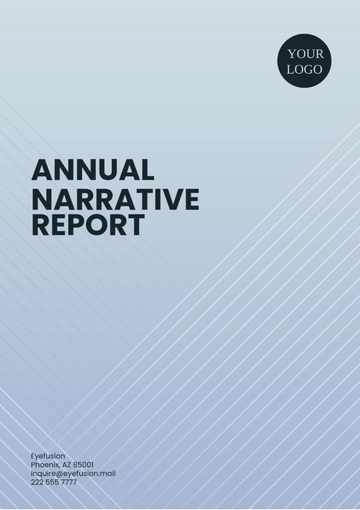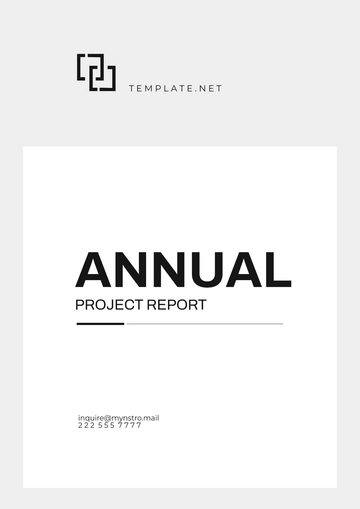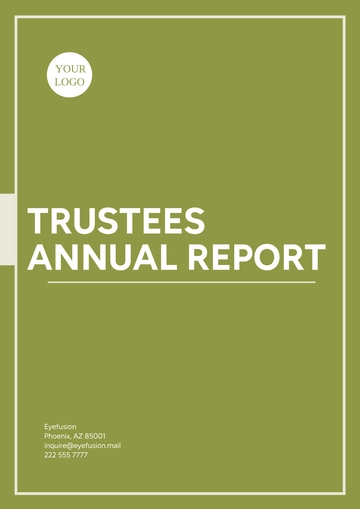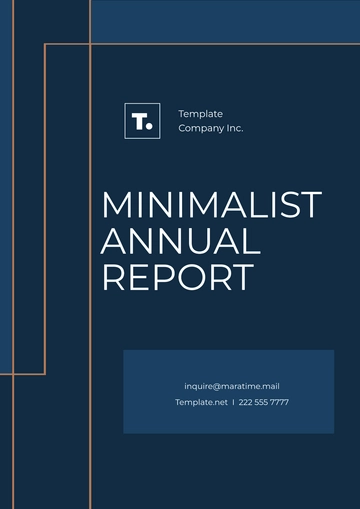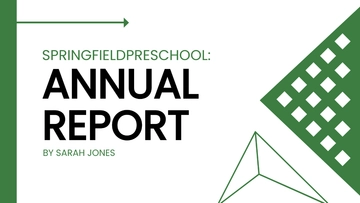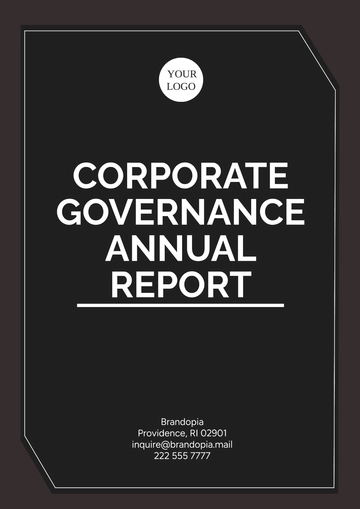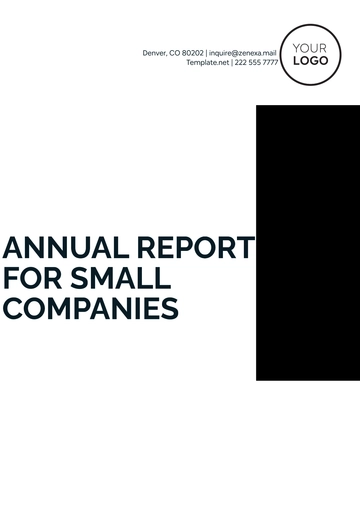Free Charity Annual Report
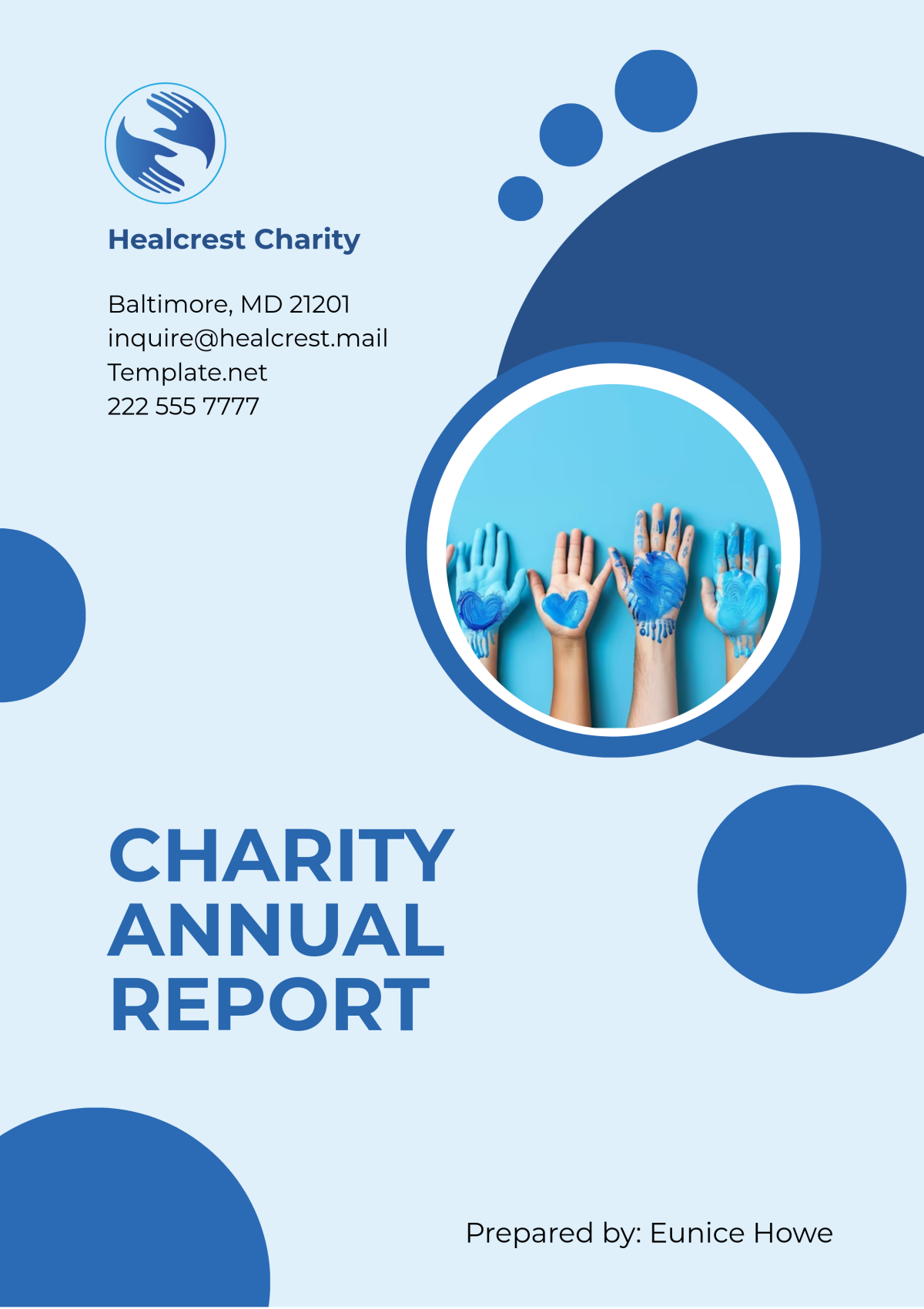
I. Executive Summary
A. Overview
In the fiscal year ending December 31,2050, [Your Company Name] has made significant strides in fulfilling its mission to uplift communities and support underprivileged individuals. With the ongoing commitment of our board, staff, volunteers, and donors, we have successfully navigated the challenges of the past year, emerging as a more robust organization dedicated to making a difference. The global pandemic and economic fluctuations presented significant hurdles, but we adapted our programs to meet the changing needs of the community.
Our primary focus this year has been on expanding our outreach efforts and enhancing our programs to better serve the diverse needs of the communities we work with. We expanded our services into previously underserved areas and integrated technology to reach a broader audience. This report will provide an in-depth look at our accomplishments, financial health, and future aspirations.
B. Mission Statement
At [Your Company Name], our mission is to empower underserved communities by providing essential resources, educational opportunities, and support services. We believe that every individual deserves a chance to thrive, and our programs are designed to help them achieve their potential. Our guiding principles include:
Compassion: Understanding and responding to the needs of those we serve, whether it be through food distribution, educational support, or mental health services.
Integrity: Maintaining transparency and accountability in all our operations, ensuring that our stakeholders are informed and engaged.
Collaboration: Working with community members, organizations, and stakeholders to amplify our impact and foster a sense of community ownership in our initiatives.
C. Key Achievements
In 2050, we achieved the following milestones:
Increased Funding: We successfully raised [$2,500,000], a [25%] increase from [$2,000,000] in 2050. This increase is attributed to our enhanced fundraising strategies, including targeted campaigns and increased corporate sponsorship.
Expanded Services: Launched [3] new programs focused on mental health support, job training, and youth mentorship. These programs were developed in response to community surveys indicating a pressing need for mental health resources and job readiness training.
Community Outreach: Reached over [10,000] individuals through workshops, community events, and direct services. Our outreach efforts included door-to-door campaigns, social media initiatives, and partnerships with local organizations to identify and serve those in need.
Volunteer Engagement: Engaged [500] volunteers who contributed over [10,000] hours of service. Our volunteers played crucial roles in program implementation, event planning, and administrative support, demonstrating a strong commitment to our mission.
II. Organizational Structure
A. Board of Directors
The Board of Directors at [Your Company Name] plays a crucial role in guiding the organization’s mission and ensuring long-term sustainability. Our board is comprised of diverse individuals from various backgrounds, bringing a wealth of experience in nonprofit management, finance, and community service. The current members are as follows:
Name | Position | Years of Service | Area of Expertise |
|---|---|---|---|
John Doe | Chair | [5] | Nonprofit Leadership |
Jane Smith | Vice-Chair | [3] | Financial Management |
Emily Johnson | Secretary | [2] | Community Engagement |
Michael Brown | Treasurer | [7] | Fundraising Strategies |
Sarah Davis | Member | [4] | Marketing and Outreach |
The board meets quarterly to review organizational progress, approve budgets, and strategize for the future. In 2050, the board implemented a new governance model focusing on diversity and inclusion to better reflect the communities we serve. Their commitment to governance and accountability ensures that [Your Company Name] operates effectively and efficiently.
B. Staff Members
Our dedicated staff is the backbone of [Your Company Name]. This year, we expanded our team to better address the needs of our community. Our current staffing includes:
Executive Director: Alice Williams
Responsible for overall management and strategic direction. Alice has over [15] years of experience in the nonprofit sector, specializing in community development and organizational leadership.Program Director: Robert Johnson
Oversees program implementation and evaluation. Robert brings a background in social work and has been instrumental in developing evidence-based programs that address community needs.Development Director: Lisa Carter
Manages fundraising efforts and donor relations. Lisa has a proven track record of securing major gifts and grants, helping us expand our funding base significantly.Volunteer Coordinator: Mark Wilson
Facilitates volunteer recruitment, training, and engagement. Mark has a passion for community service and works diligently to create a rewarding experience for our volunteers.Administrative Assistant: Karen Lee
Supports daily operations and administrative tasks. Karen ensures that our operations run smoothly, managing schedules, communications, and logistics.
Each staff member plays a vital role in ensuring the smooth functioning of our programs and services. Together, they embody our mission and values, working tirelessly to make a positive impact in the communities we serve.
C. Volunteers
Volunteers are integral to the success of [Your Company Name]. This year, we recruited [500] volunteers, who contributed invaluable support through various initiatives. Our volunteers are involved in:
Direct Service: Providing assistance in food distribution, educational programs, and community events. For instance, volunteers helped distribute over [100,000] food packages during our monthly food drives.
Administrative Support: Helping with office tasks, data entry, and outreach efforts. Volunteers also contributed to organizing our fundraising events, including setting up and managing logistics.
Fundraising: Assisting in planning and executing fundraising events. Our volunteer team successfully organized the annual gala, which raised [$500,000] for our programs.
We are grateful for the dedication and passion of our volunteers, as they embody our mission through their selfless contributions. We strive to create a rewarding experience for our volunteers by offering training, recognition, and opportunities for personal growth. This year, we introduced a Volunteer Recognition Program that acknowledges outstanding contributions, fostering a sense of community among our volunteers.
III. Financial Overview
A. Revenue Sources
In 2050, [Your Company Name] diversified its revenue streams to ensure sustainability and growth. The total revenue for the year reached [$2,500,000]. The breakdown of revenue sources is as follows:
Revenue Source | Amount ($) | Percentage of Total Revenue (%) |
|---|---|---|
Individual Donations | [$1,000,000] | [40%] |
Corporate Sponsorships | [$600,000] | [24%] |
Grants | [$500,000] | [20%] |
Fundraising Events | [$300,000] | [12%] |
Membership Fees | [$100,000] | [4%] |
Individual donations remain our primary source of funding, reflecting the community’s commitment to our mission. This year, we launched a targeted campaign to encourage monthly giving, which resulted in an increase of [30%] in individual contributions. Corporate sponsorships have also seen a rise, showcasing increased business involvement in social responsibility initiatives. Notable sponsors this year included Local Bank and Tech Innovators Inc., both of whom contributed significantly to our fundraising events.
B. Expense Breakdown
For the fiscal year 2051, total expenses amounted to [$2,200,000], representing a [10%] increase from [$2,000,000] in 2050. The distribution of expenses is illustrated in the following table:
Expense Category | Amount ($) | Percentage of Total Expenses (%) |
|---|---|---|
Program Services | [$1,200,000] | [55%] |
Administrative Expenses | [$600,000] | [27%] |
Fundraising Expenses | [$300,000] | [14%] |
Marketing and Outreach | [$100,000] | [4%] |
The majority of our expenses are allocated to program services, underscoring our commitment to delivering impactful initiatives to the community. We remain diligent in managing administrative costs to maximize resources for our programs. In 2050, we also invested in marketing and outreach strategies to enhance our visibility and attract more supporters. This includes developing a user-friendly website and social media campaigns that reached over [50,000] people, promoting our mission and programs effectively.
C. Financial Statements
The following financial statements provide a snapshot of our financial health as of December 31,2050:
Statement of Financial Position
Assets | Amount ($) |
|---|---|
Current Assets | [$800,000] |
Fixed Assets | [$200,000] |
Total Assets | [$1,000,000] |
Liabilities | Amount ($) |
|---|---|
Current Liabilities | [$300,000] |
Long-term Liabilities | [$100,000] |
Total Liabilities | [$400,000] |
Net Assets | Amount ($) |
|---|---|
Unrestricted Net Assets | [$600,000] |
Temporarily Restricted Net Assets | [$0] |
Total Net Assets | [$600,000] |
Statement of Activities
Revenue | Amount ($) |
|---|---|
Total Revenue | [$2,500,000] |
Expenses | Amount ($) |
|---|---|
Total Expenses | [$2,200,000] |
Change in Net Assets | Amount ($) |
|---|---|
Increase in Net Assets | [$300,000] |
Our financial statements indicate a healthy financial position, with total net assets of [$600,000]. We have managed to maintain a surplus, which will enable us to reinvest in our programs and explore new initiatives in the coming year. Our commitment to financial transparency ensures that stakeholders are informed of our fiscal health, enabling us to maintain trust and accountability.
IV. Programs and Services
A. Description of Programs
In 2050, [Your Company Name] operated several key programs aimed at addressing the needs of our community. These programs are tailored to empower individuals and families by providing essential resources, education, and support. Our main programs include:
Food Assistance Program:
Our flagship program, which provides food relief to families facing food insecurity. In 2050, we distributed over [250,000] pounds of food to [3,000] families in need. This program also includes nutritional education workshops that educate participants about healthy eating on a budget. During these workshops, we engage participants in cooking demonstrations, helping them to learn how to prepare nutritious meals using the resources available to them.Youth Mentorship Program:
Focused on empowering young individuals through mentorship and educational support. This year, we paired [150] youth with mentors from various professional backgrounds. Mentors provide guidance on academic performance, college readiness, and career planning. In addition, we organized monthly group activities that foster teamwork and leadership skills among mentees. Feedback from participants indicated that [95%] of them felt more confident in their academic abilities and career aspirations after completing the program.Job Training and Placement Program:
We offer training workshops and job placement services for unemployed and underemployed individuals. In 2050, [200] individuals completed our training programs, focusing on skill sets such as computer literacy, resume writing, and interview techniques. Our job placement services have an impressive track record, with [75%] of participants securing employment within [3] months of completing the training. We maintain partnerships with local employers to facilitate job placements and ensure that our training aligns with workforce needs.Mental Health Support Services:
We provide counseling and mental health resources for individuals facing emotional and psychological challenges. Our trained counselors served over [1,000] clients this year, offering therapy sessions, support groups, and workshops focused on coping strategies. To reach a broader audience, we introduced online therapy sessions, making it easier for clients to access services. Our mental health initiatives emphasize the importance of community well-being, and we have seen a [40%] increase in participants expressing improved mental health outcomes after attending our sessions.
B. Impact Assessment
To measure the effectiveness of our programs, we implement an impact assessment framework that includes both qualitative and quantitative metrics. Key findings from our 2050 assessments include:
Increased Food Security: [90%] of participants in our Food Assistance Program reported improved access to food, with many stating that they were able to provide healthier meals for their families.
Educational Improvement: Youth participants in our Mentorship Program showed an average increase of [15%] in their grades over the year. This improvement is particularly evident among students who participated in our college prep workshops, where they received guidance on college applications and financial aid.
Job Placement Success: [80%] of job training graduates reported securing jobs within [3] months, contributing to improved economic stability. Many graduates shared personal stories of how the program transformed their lives, enabling them to provide for their families and regain a sense of purpose.
C. Case Studies
1. Case Study: Maria's Journey
Maria, a single mother of two, faced significant challenges in providing for her family. After losing her job during the pandemic, she struggled to make ends meet. Through our Food Assistance Program, she received essential groceries, alleviating some of her financial burdens. Additionally, she participated in our Job Training Program, gaining skills in customer service and basic computer applications. With newfound confidence, Maria secured a stable job at a local retail store. Maria now supports her family and is actively involved in her community, volunteering with us to give back. Her story exemplifies the transformative power of our programs and the resilience of the individuals we serve.
2. Case Study: Youth Empowerment
In 2050, we mentored a group of [10] high school students from underserved backgrounds, helping them navigate academic challenges. Each student was paired with a mentor who provided guidance and support. They participated in workshops on time management, study skills, and career exploration. By the end of the year, all [10] students improved their grades, and many expressed increased confidence in their abilities. They have since become advocates for their peers, encouraging other students to seek mentorship. One student, David Lopez, initiated a peer mentorship program at his school, demonstrating the ripple effect of our Youth Mentorship Program.
V. Community Engagement
A. Volunteer Activities
Volunteers are a crucial part of [Your Company Name]'s operations. In 2050, our volunteers engaged in various activities, including:
Community Clean-Up Days: We organized [5] clean-up events where volunteers assisted in cleaning and beautifying local parks and public spaces. Over [200] volunteers participated, collectively removing [5,000] pounds of litter and debris from the community. This initiative not only improved the environment but also fostered a sense of pride among residents.
Workshops and Training: Volunteers led workshops on financial literacy, resume building, and interview skills, benefiting over [300] participants. These workshops empower community members with essential skills to improve their economic stability. Feedback from participants highlighted the valuable knowledge gained, with many reporting feeling more prepared for job interviews.
Advocacy Campaigns: Volunteers participated in advocacy efforts to raise awareness about food insecurity and mental health issues. We organized a series of community forums, engaging over [500] attendees. Our volunteers helped facilitate discussions and gather input from community members on pressing local issues, ensuring that their voices are heard.
B. Partnerships and Collaborations
Collaboration is key to amplifying our impact. In 2050, [Your Company Name] formed partnerships with various organizations, including:
Local Businesses: Collaborating with local businesses to sponsor events and provide resources for our programs. For example, Local Grocery Store donated [$50,000] worth of food items for our Food Assistance Program, significantly boosting our capacity to serve families in need.
Educational Institutions: Partnering with schools and universities to offer internships and service-learning opportunities for students. Our partnership with State University has allowed [20] students to gain hands-on experience in nonprofit management while supporting our programs.
Government Agencies: Working with local government to address community needs and secure funding for essential services. We received a grant from the City Council totaling [$250,000] to expand our mental health services, enabling us to hire additional counselors and provide more comprehensive support.
These partnerships have enhanced our ability to deliver effective programs and expand our reach within the community. Collaborative efforts have enabled us to leverage resources, knowledge, and networks that amplify our impact.
C. Events and Fundraisers
Our fundraising events are pivotal for sustaining our programs. In [2050], we organized several successful events, including:
Annual Gala: Our flagship fundraising event, which raised [$500,000] through ticket sales, auctions, and donations. This year’s theme was “A Night of Hope,” and we featured local artists and speakers who shared inspiring stories of transformation. The event attracted [300] attendees, including community leaders, local business owners, and supporters.
Community Festival: A family-friendly event featuring activities, food stalls, and entertainment, attracting over [2,000] attendees and generating [$100,000] for our programs. The festival included games for children, live performances, and informational booths showcasing our services. Participants left with a deeper understanding of our mission and how they can get involved.
Online Campaign: In response to the pandemic, we launched an online fundraising campaign that raised [$150,000]. This campaign utilized social media platforms to engage supporters, share stories, and highlight the impact of our programs. The online nature of the campaign allowed us to reach a broader audience, resulting in contributions from [300] new donors.
VI. Future Outlook
A. Strategic Goals
Looking ahead to 2051, [Your Company Name] has set ambitious strategic goals to enhance our impact:
Expand Program Reach: Increase the number of individuals served by [20%] in all programs, particularly focusing on mental health support and job training. We aim to reach [12,000] individuals through our services, addressing the growing demand in the community.
Enhance Volunteer Engagement: Develop a comprehensive volunteer training program to enhance volunteer skills and retention. We plan to increase our volunteer base by [25%], ensuring that we have the capacity to support our expanded services.
Diversify Funding Sources: Increase our corporate sponsorships and grant funding by [30%]. Our goal is to secure [3] new major corporate partners and apply for at least [5] new grants to support specific programs.
B. Upcoming Initiatives
In the coming year, we plan to introduce several new initiatives, including:
Mental Health Awareness Campaign: Launch a community-wide campaign focused on reducing stigma around mental health. This initiative will include workshops, community forums, and resource distribution to raise awareness and encourage individuals to seek help.
Youth Employment Program: Develop a summer job placement program for high school students, connecting them with local businesses for internships. This initiative will equip youth with valuable work experience and skills while addressing workforce needs in our community.
Digital Literacy Training: Implement a program aimed at improving digital literacy among adults. This initiative will offer workshops on basic computer skills, online safety, and job search strategies in the digital age, helping community members navigate the increasingly technology-driven workforce.
C. Call to Action
We invite our community, partners, and supporters to join us in realizing our vision for the future. Whether through volunteering, donating, or sharing our mission, your involvement is crucial to our success. Together, we can create lasting change and empower individuals and families in our community. We encourage everyone to visit our website at [Your Company Website] to learn more about our programs, upcoming events, and how to get involved. Together, let’s build a brighter future for all.
VII. Conclusion
A. Summary of Achievements
In 2050, [Your Company Name] made significant progress toward achieving its mission. With increased funding, expanded programs, and a dedicated team of staff and volunteers, we successfully addressed the pressing needs of our community. Our efforts to engage with stakeholders and form partnerships have enhanced our capacity to serve those in need.
B. Acknowledgments
We extend our heartfelt gratitude to all our donors, partners, volunteers, and community members who have supported us throughout the year. Your generosity and commitment to our mission have made a profound difference in the lives of many. Special thanks to our major donors, including ABC Foundation, XYZ Corporation, and Local Philanthropist, whose contributions have been instrumental in our success.
C. Final Thoughts
As we reflect on the achievements of the past year, we are filled with hope and determination for the future. The journey ahead will undoubtedly present challenges, but with your continued support, we are confident in our ability to overcome them. Together, we will continue to uplift and empower our community, ensuring that every individual has the opportunity to thrive. Thank you for being an essential part of our mission.
- 100% Customizable, free editor
- Access 1 Million+ Templates, photo’s & graphics
- Download or share as a template
- Click and replace photos, graphics, text, backgrounds
- Resize, crop, AI write & more
- Access advanced editor
Showcase your impact with the Charity Annual Report Template from Template.net. This editable and customizable template allows you to summarize your achievements, financial status, and future goals in a professional format. Use our Ai Editor Tool to personalize it, effectively communicating your charity's success to stakeholders.
You may also like
- Sales Report
- Daily Report
- Project Report
- Business Report
- Weekly Report
- Incident Report
- Annual Report
- Report Layout
- Report Design
- Progress Report
- Marketing Report
- Company Report
- Monthly Report
- Audit Report
- Status Report
- School Report
- Reports Hr
- Management Report
- Project Status Report
- Handover Report
- Health And Safety Report
- Restaurant Report
- Construction Report
- Research Report
- Evaluation Report
- Investigation Report
- Employee Report
- Advertising Report
- Weekly Status Report
- Project Management Report
- Finance Report
- Service Report
- Technical Report
- Meeting Report
- Quarterly Report
- Inspection Report
- Medical Report
- Test Report
- Summary Report
- Inventory Report
- Valuation Report
- Operations Report
- Payroll Report
- Training Report
- Job Report
- Case Report
- Performance Report
- Board Report
- Internal Audit Report
- Student Report
- Monthly Management Report
- Small Business Report
- Accident Report
- Call Center Report
- Activity Report
- IT and Software Report
- Internship Report
- Visit Report
- Product Report
- Book Report
- Property Report
- Recruitment Report
- University Report
- Event Report
- SEO Report
- Conference Report
- Narrative Report
- Nursing Home Report
- Preschool Report
- Call Report
- Customer Report
- Employee Incident Report
- Accomplishment Report
- Social Media Report
- Work From Home Report
- Security Report
- Damage Report
- Quality Report
- Internal Report
- Nurse Report
- Real Estate Report
- Hotel Report
- Equipment Report
- Credit Report
- Field Report
- Non Profit Report
- Maintenance Report
- News Report
- Survey Report
- Executive Report
- Law Firm Report
- Advertising Agency Report
- Interior Design Report
- Travel Agency Report
- Stock Report
- Salon Report
- Bug Report
- Workplace Report
- Action Report
- Investor Report
- Cleaning Services Report
- Consulting Report
- Freelancer Report
- Site Visit Report
- Trip Report
- Classroom Observation Report
- Vehicle Report
- Final Report
- Software Report
